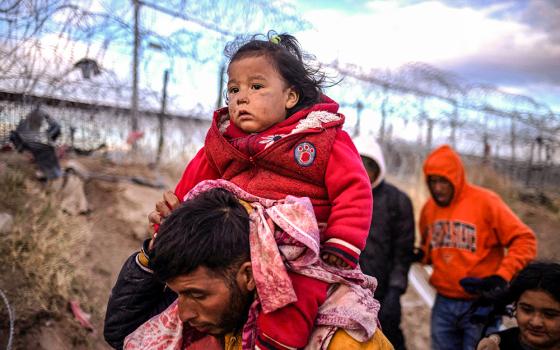
ANALYSIS
EAST MELBOURNE, AUSTRALIA -- “Tonight I have been raised to new heights literally at both ends, though I still feel relatively small.” These were the first words of newly ordained Auxiliary Bishop Vincent Long Van Nguyen of Melbourne in his remarks at the end of a historic ordination ceremony here on June 23, when the first Asian-born priest was welcomed into the Australian episcopacy.
Long’s words take credence not only because he was standing alongside the much taller Archbishop Denis Hart of Melbourne and Cardinal George Pell of Sydney, but also because of what the new bishop perceives as the great challenges and tasks that lie ahead for him.
Born in Dong Nai, Vietnam, in 1961, Long Van Nguyen fled his country in 1979 on an overcrowded boat and was at sea for eight days before ending up in Malaysia. He was in a refugee camp for more than a year and later resettled in Australia. He joined the Conventual Franciscans in Melbourne, was ordained in 1989, pursued a licentiate in Rome, and rose through the ecclesiastical ranks quickly.
He was first elected superior of his order in Australia in 2005 and then called to Rome to serve as assistant general for the Asia-Oceania region in 2008. On the night of June 23, 2011, Vincent Long was ordained titular bishop of Tala and auxiliary of the Melbourne archdiocese.
The ordination is historic in more than one sense. First, it is a signal of the Asian church come of age in Australia. But more importantly, it is also a signal of the changing face of the Australian Catholic church, which is becoming increasingly non-European. As a church that was overwhelmingly Irish historically, Catholicism began to expand its ethnic composition with the arrival of other European Catholics following the Second World War.
In the last few decades, with the immigration of Catholics from countries such as Malaysia, Singapore, South Korea, Sri Lanka, Vietnam and the Philippines, its face has become even more diversified. Asians are today a significant community in Australia. Not only is this visible in the public square, where one’s banker is probably from China and one’s pharmacist from India, in some churches there are also signs in Vietnamese, listing the times for Mass (gio le) on weekdays (ngay trong tuan) and weekends (cuoi tuan) and where the Filipino novena of simbang gabi makes it in the bulletin.
Statistics show that more than a quarter of Catholics in Australia were born abroad. But in some suburbs, such as Box Hill in Victoria, as much as 40 percent of its population is of Asian descent. There are also more females among Asian migrants than males: The Philippines stands out on this, as there are twice as many women than men who migrate from there to Australia, partly due to the phenomenon of the mail-order bride.
Coupled with the fact that Catholics of European descent are becoming increasingly secular and unchurched, this rise in Asian Catholics will impact the church significantly in Australia, in arguably much the same way the Hispanics have in the United States.
For one, it means that if Catholicism has overtaken Anglicanism to become the single largest denomination (representing about a third of the population), it is not due to growth in its aging European communities, but to the influx of migrant Catholics, or at least to growth mainly among the new migrants.
It is not surprising then that Australian seminaries have become more and more multicultural. The majority of seminarians at the Jesuit Theological College in Melbourne, for example, are of non-European descent. This “southernization” of Australian Catholicism would also mean that a return to a more pietistic faith might be on the horizons.
The debate goes on as to whether this is for the better or for the worse. On one side of the fence are those who see these newly-arrived Catholics as practicing a faith that is old-fashioned, devotional and superstitious, and have problems with their differing views on the exercise of authority and treatment of women. On the other side are those who welcome them precisely because they stand in opposition to the liberal agenda of disaffected Catholics of European descent who are focused on issues such as the democratization of the church and the ordination of women or of married men.
If the hierarchy’s solution to the lack of vocations is the importation of priests and seminarians from developing countries, others are adamant that this remains but a stopgap measure. These priests then find themselves not fully accepted as missionaries but merely as migrant workers, and encounter similar issues of discrimination as faced by other migrants in society. The authentic integration of Asian Catholics remains a challenge and it is this that the new bishop will have to deal with.
[Edmund Chia (Malaysian) and Gemma Cruz (Filipina) were born in Asia, studied in Europe, taught in the United States for several years, and recently moved to Melbourne to join the Faculty of Theology of the Australian Catholic University.]



